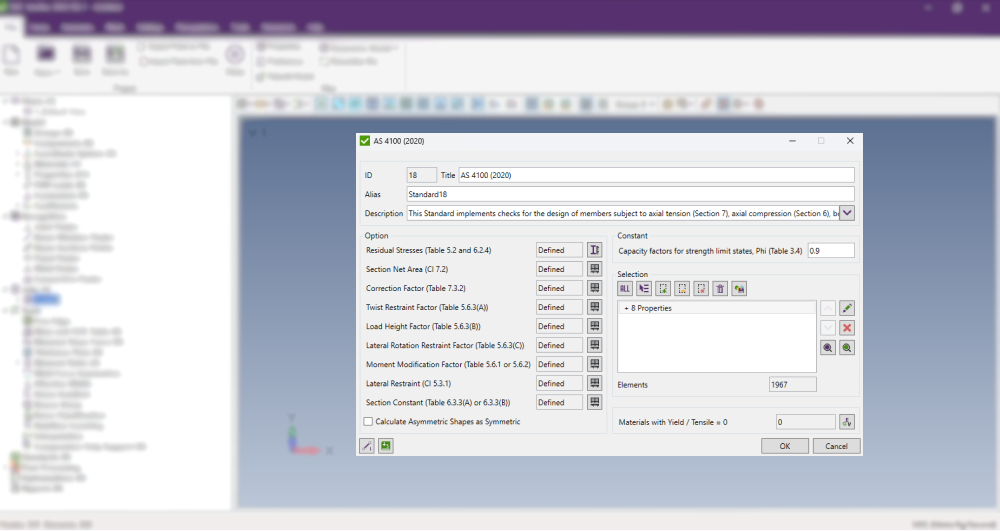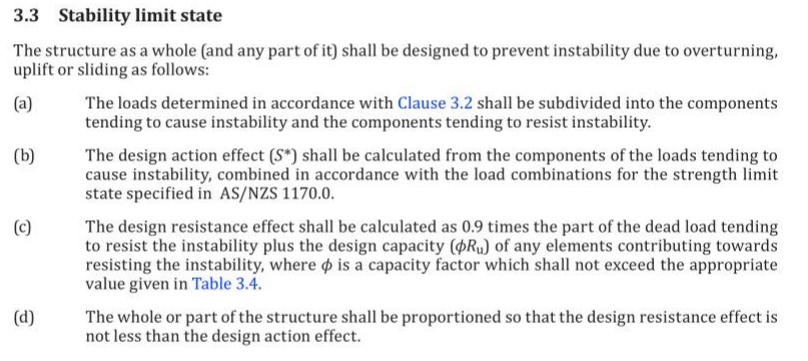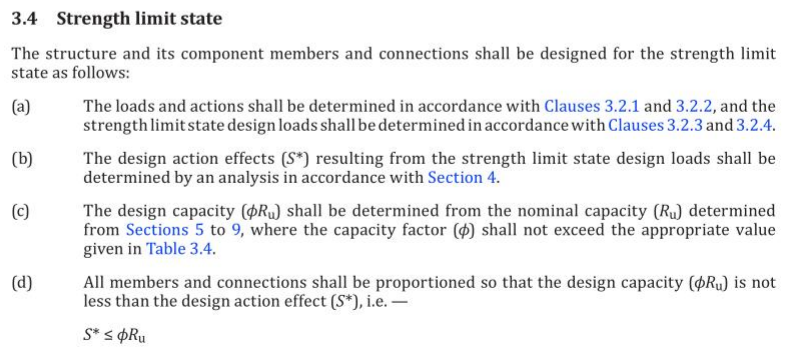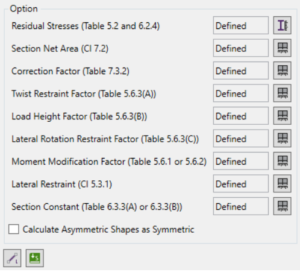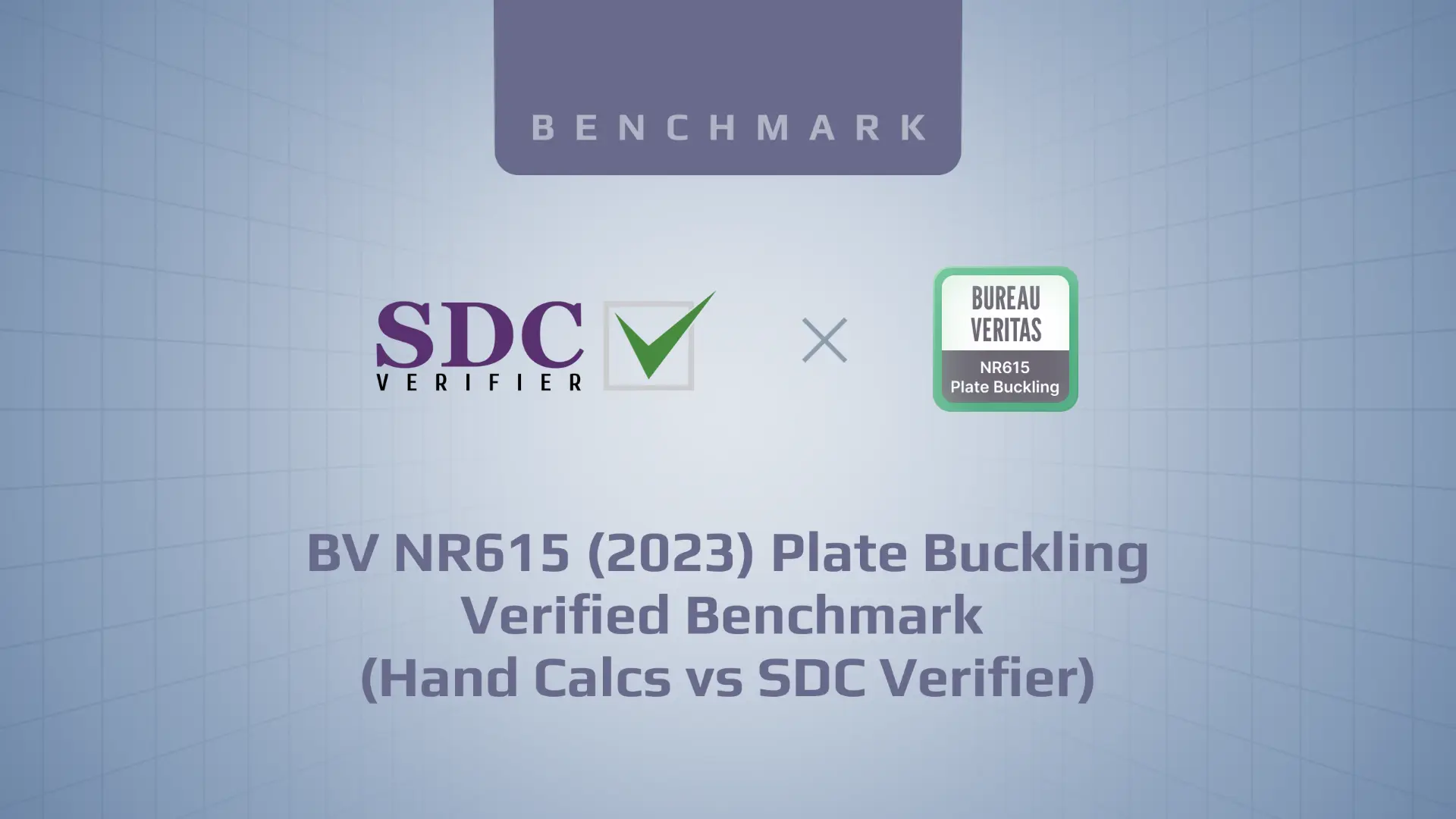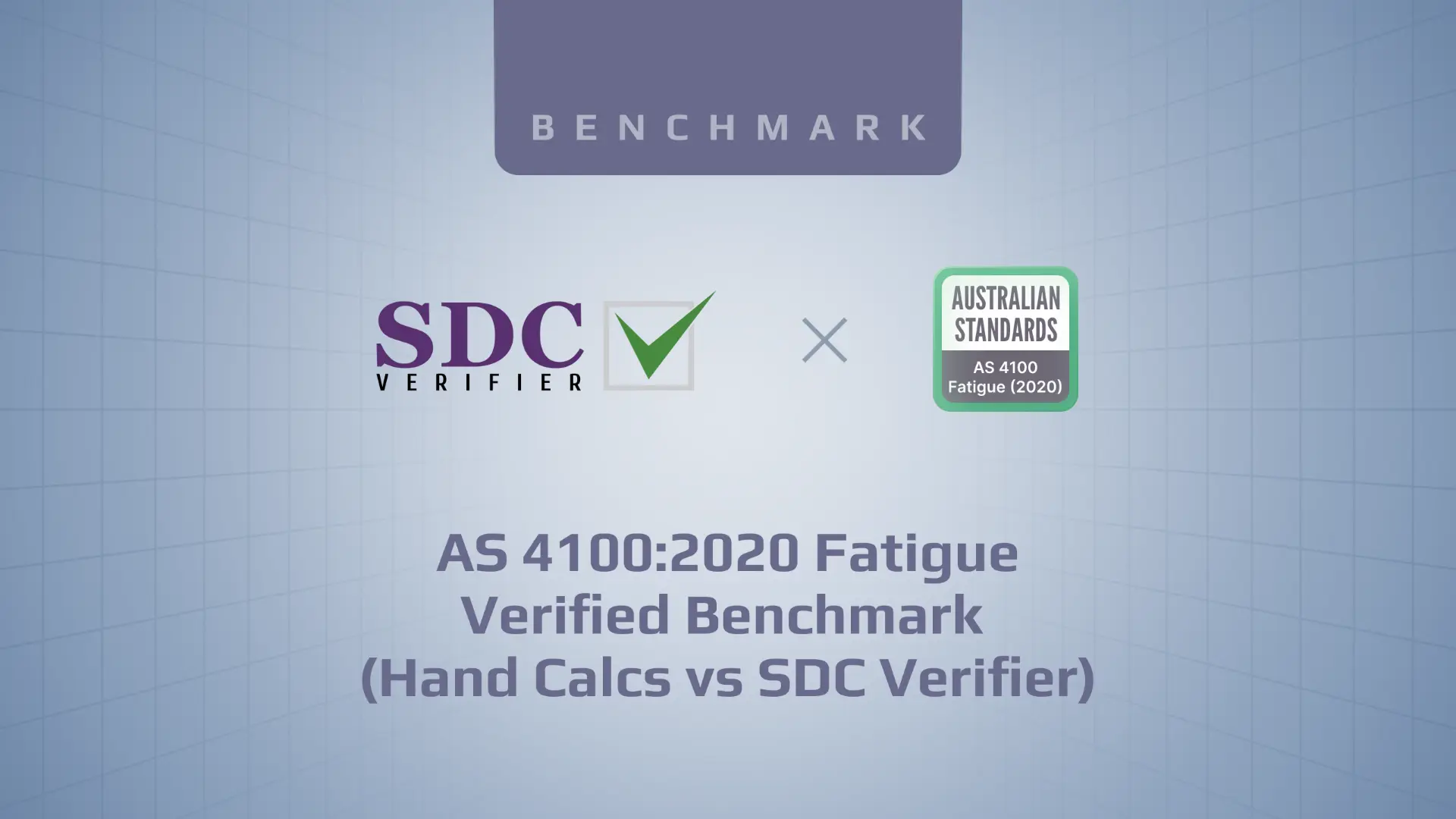The Engineer’s Guide to AS 4100 (2020) Mastery with SDC Verifier

The Australian Standard 4100 (AS 4100) is the backbone for the design and construction of steel structures in Australia.
Its 2020 revision introduced updates that structural engineers must thoroughly understand for compliant designs. Fortunately, software like SDC Verifier significantly eases this transition. Since its 2024 R1 version, SDC Verifier has incorporated the AS 4100 (2020) changes, automating complex calculations and streamlining workflows.
This article delves into the key ways SDC Verifier simplifies the adoption of the revised AS 4100 standard. We’ll explore how the software not only ensures compliance but also boosts efficiency, allowing engineers to focus on innovative design solutions rather than tedious manual verifications.
AS 4100 (2020) Overview
The Australian Standard AS 4100 (2020) serves as the definitive guide for designing steel structures within Australia. It is a comprehensive framework that provides engineers with the criteria for the design and construction of steelwork for structural purposes.
The standard ensures that structures are designed to withstand not only the demands of their intended use but also the various environmental stresses they may encounter throughout their lifecycle.
AS 4100 (2020) applies to a wide range of steel structures, from commercial and residential buildings to industrial facilities.
The 2020 revision of AS 4100 brings about noteworthy changes that every structural engineer should know. These include:
- Material Specifications: Updated material grades, yield strengths, and ultimate strengths are incorporated, potentially impacting member selection.
- Design Methodologies: Revisions in design procedures, particularly for seismic loading and fatigue assessments, emphasize the need to re-evaluate design approaches.
- Harmonization with Standards: Alignment with other relevant Australian Standards, such as AS/NZS 5131:2016, promotes a more integrated design and fabrication process.
The standard encompasses a variety of checks to verify the adequacy of structural members under different loading conditions in the SDC Verifier:
- Axial Tension (Section 7): This check ensures that members under tension do not exceed their capacity, taking into account factors such as cross-sectional area and material strength.
- Axial Compression (Section 6): For members under compression, the standard provides guidelines to prevent buckling, considering slenderness ratios and associated reduction factors.
- Bending (Section 5): The bending check verifies that the bending moments in beams and other members do not surpass the section’s moment capacity, which is influenced by the shape and size of the cross-section.
- Shear (Clause 5.11): Shear checks are crucial for ensuring that the shear forces do not exceed the shear capacity of the member, which could lead to catastrophic failure modes such as shear buckling or web crippling.
- Combined Actions (Section 8): Often, members are subjected to a combination of axial, bending, and shear forces. This section provides a method to assess the interaction of these forces and ensure that the combined stresses remain within safe limits.
The implementation of these checks in SDC Verifier software represents a significant step forward in streamlining the design process, providing engineers with a robust tool for ensuring compliance with this essential standard.
Ensure the accuracy of your AS 4100 steel structure calculations. Our benchmarks carefully follow the Australian Steel Institute’s (ASI) Steel Structures – Sample Worked Problems to AS 4100.
SDC Verifier’s Implementation
SDC Verifier stands at the forefront of structural analysis software, offering unparalleled support for the design and verification of steel structures following the rigorous standards set forth by AS 4100 (2020). The software’s robust capabilities extend to a diverse array of symmetric cross-sections, which are fundamental to the integrity and stability of steel structures.
Support for Various Symmetric Cross-Sections:
- I-Beams
SDC Verifier provides comprehensive analysis tools for I-beams, one of the most commonly used cross sections in structural engineering. The software ensures that these beams can be accurately assessed for their moment of inertia, section modulus, and overall bending performance.
- Channels
The software’s adept handling of channel sections allows for precise calculations of shear forces, bending moments, and torsional stresses, ensuring that these members perform as intended under various load conditions.
- Tubes
Circular and rectangular tubes are evaluated with SDC Verifier’s advanced algorithms, which account for factors such as torsional rigidity and buckling resistance, essential for hollow structural sections.
Ensuring Design Compliance with Limit States Design Methods
SDC Verifier strongly aligns with the limit states design method, a fundamental principle within AS 4100 and modern structural engineering. This approach safeguards structures by considering these two primary categories of limit states:
1. Serviceability Limit States:
- SDC Verifier supports assessments related to serviceability by allowing users to visualize deflections resulting from load combinations.
- While the software does not directly automate vibration analysis, it facilitates the process by providing the structural model and deformed shapes, which can be leveraged for subsequent vibration studies.
- Future iterations of the SDC Verifier are planned to include automated bolt serviceability checks.
Note that aspects of serviceability, such as corrosion protection, lie predominantly in the fabrication and execution phases of a project.
2. Ultimate Limit States: As outlined in AS 4100, the ultimate limit states are further divided for clarity:
- Stability Limit States (AS 4100 Section 3.3): SDC Verifier aids in the design of structures to resist global instability modes, such as overturning, uplift, or sliding, as guided by the standard.
- Strength Limit States (AS 4100 Section 3.4): SDC Verifier excels in automating the strength checks for structural members. It rigorously calculates design capacities based on the standard’s provisions, ensuring structures can safely withstand the maximum loads defined within load combinations, without experiencing failure modes such as yielding, buckling, and fracture.
By providing tools for evaluating both serviceability and ultimate limit states, SDC Verifier offers structural engineers a valuable tool to ensure designs comprehensively meet the requirements of AS 4100.
Customization and Flexibility
In structural engineering, the ability to tailor design verification processes to specific project requirements is invaluable. SDC Verifier’s software architecture embodies this principle of customization and flexibility, offering engineers a suite of options to fine-tune their analyses according to custom standards and unique project demands.
Options for Setting Custom Standards: SDC Verifier recognizes that no two projects are alike and provides engineers with the capability to adjust standard parameters to fit the context of their work. This includes:
- Residual Stresses: The software allows for the input of residual stress values as per Tables 5.2 and 6.2.4 of AS 4100 (2020), accommodating different manufacturing and construction processes that affect residual stress profiles in steel members.
- Section Net Area: Engineers can specify the net area of cross-sections (Cl 7.2) to account for reductions due to holes, notches, or other modifications, ensuring that the net section’s capacity is accurately reflected in the design checks.
- Significance of Design Verification Factors: Certain factors play a critical role in the structural integrity of steel members and their performance under load. SDC Verifier provides options to account for these factors, which include:
- Twist Restraint: The twist restraint factor, derived from Table 5.6.3(A), is crucial in assessing the torsional stability of members, particularly in preventing lateral-torsional buckling in beams and columns.
- Load Height: The load height factor, based on Table 5.6.3(B), is significant when considering the point of application of loads. It affects the bending moment distribution and, consequently, the design for bending resistance.
- Lateral Rotation Restraint: The lateral rotation restraint factor from Table 5.6.3(C) is essential in evaluating the rotational fixity of members. This factor influences the member’s effective length and susceptibility to buckling under compression.
By incorporating these customizable options and factors into its design verification process, SDC Verifier empowers engineers to achieve a higher degree of accuracy and reliability in their structural designs.
Streamlining Design Verification
SDC Verifier has revolutionized this process with its intelligent automation capabilities, which significantly reduces the time and effort required for engineers to validate their designs against the stringent requirements of standards like AS 4100 (2020).
Automation of Beam Lengths and Member Section Recognition
SDC Verifier’s sophisticated algorithms automate the recognition of beam lengths and member sections, a task that traditionally requires meticulous manual input. This automation is achieved through:
- Intelligent Parsing: The software intelligently parses the geometric data of the model, identifying and categorizing different member sections based on their properties and dimensions.
- Beam Member Finder: Utilizing the Beam Member Finder, the SDC Verifier automatically detects the lengths of beams in both the Y and Z directions, crucial for calculating deflections and ensuring the structural members meet serviceability limits.
Benefits of Calculating Asymmetric Shapes as Symmetric
The challenge of dealing with asymmetric cross-sections in design verification is adeptly handled by SDC Verifier, which offers the option to calculate these complex shapes as symmetric. This simplification brings several benefits:
- Reduced Complexity: By treating asymmetric shapes as symmetric, the software reduces the complexity of calculations, allowing for a more straightforward analysis of stress distribution and load-carrying capacity.
- Time Savings: This approach saves significant time in the design process, as it circumvents the need for complex adjustments and additional checks that asymmetric sections typically require.
- Conservative Approach: Calculating asymmetric shapes as symmetric often results in a conservative design, ensuring a greater margin of safety without the need for extensive customization.
Through these advanced features, SDC Verifier not only streamlines the design verification process but also ensures that engineers can focus on innovation and optimization, confident in the knowledge that their designs adhere to the latest industry standards with efficiency and precision.
Conclusion
Navigating the revisions within AS 4100 (2020) doesn’t have to be a daunting task. SDC Verifier stands as a powerful ally for engineers seeking to streamline compliance and optimize designs within the framework of the updated standard. Let’s recap the essential benefits it offers:
- Unwavering Compliance: SDC Verifier’s automated calculations and code-aligned algorithms ensure that your designs meet the rigorous requirements of AS 4100 (2020).
- Efficiency Amplified: Accelerate your verification processes, reallocating time and energy to the core value that engineers bring – innovative and resourceful problem-solving.
- Risk Mitigation: By minimizing the potential for human error in complex code interpretations, SDC Verifier helps ensure the structural integrity of your projects.
SDC Verifier empowers engineers to stay ahead of the curve. It’s a tool that allows you to focus on delivering exceptional, code-compliant steel structures – with confidence and efficiency.



